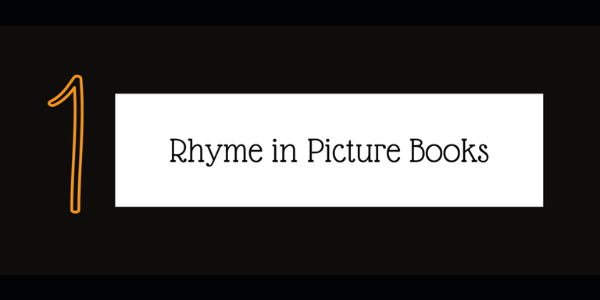
Here are a few of the topics that I am already fully prepared to teach to high school, college, and adults:
- Distinctions between end rhyme and internal rhyme
- Mix it up–don’t sing your readers to sleep.
- Surprise your readers with unique word patterns.
- Don’t be too predictable.
Read what my editor Frances Gilbert, who is Editor in Chief at Doubleday for Young Readers said about using rhyme in picture books:

“I’ve been a children’s book editor for over 25 years and one of the most common reasons I reject picture book manuscripts is that they rhyme badly. So why, for my first foray into writing a picture book myself, would I choose to write Go, Girls, Go! in rhyme??! Rhyming, we’re so often told – by editors, by agents, by fellow writers – is not encouraged. Bound to fail, hard to translate. But I love rhyming books. I love reading them, and I love publishing them. Turns out, I love writing them too.” Frances Gilbert On Rhyming Picture Books in Goodreads
I love sharing any tips that Frances Gilbert has to offer. She is very special to me. You see, she is the editor [in chief] who acquired The Donkey’s Song for publication. At the time of her acquiring my picture book manuscript, I did not realize that Frances was also an authority on rhyme, and now, I feel especially fortunate that The Donkey’s Song managed to jump through her wise-about-rhyming-picture-books hoop. The following is how Frances lists her concerns about rhyming picture books:
“The number one mistake in rhyming texts is when the rhyme overwhelms the story rather than serving the story. The monotony of a 32-page story all told in the same rhythm can wear a reader down after a few pages. As an editor, I often start these submissions thinking, “Okay, let’s see if this can be sustained . . .” and after a few stanzas say, “Oh please stop. I can’t do this anymore.” The sing-song-y-ness of “dah-duh dah-duh dah-duh, dah-dah” in line after line pummels a reader with sameness. It also encourages authors to make terrible word choices: odd or forced descriptions or line endings because that last word HAS. TO. RHYME. My test: Extract a line out of your rhyming text and ask yourself if you’d write it the same way if it DIDN’T have to rhyme. If the answer is no, it’s a bad line. The rhyming has to feel effortless.” Frances Gilbert On Rhyming Picture Books in Goodreads
After Frances acquired The Donkey’s Song, she said the following about the writing [The Donkey’s Song is a rhyming picture book]. “What enchanted me most was your unexpected word choice throughout. Every line felt like a surprise and a perfect little package. And tying it up so neatly yet emotionally. It’s a masterpiece, Jacki.”
Take it from me: Frances is an outstanding editor, and she doesn’t say things that she doesn’t mean. I cherish Frances’s appraisal of the text of The Donkey’s Song, and now, that the reviews are dropping in, I am discovering that the best of the best picture book reviewers agree with Frances:

“The humble donkey that transported Mary to the Bethlehem stable describes the sights, smells, and sounds it experiences in this peaceful imagining of Jesus’s birth. Using short rhyming stanzas and reiterative phrasing (“A bit of a manger, a bit of snug hay, a bit of a soft, silent night”), debut author Kellum creates an understated tone matched by Hanson’s pastoral scenes, which are gently washed in light. Friendly-faced farm animals—including the large-headed donkey and a kind, sprightly mouse—fill most of the spreads, leading in closing pages to the donkey’s moving song: “I lifted my head/ above His hay bed…and sang of this morning of grace.” A sweet and gentle introduction to the nativity story. Ages 3–7. (Oct.)” – Publisher’s Weekly
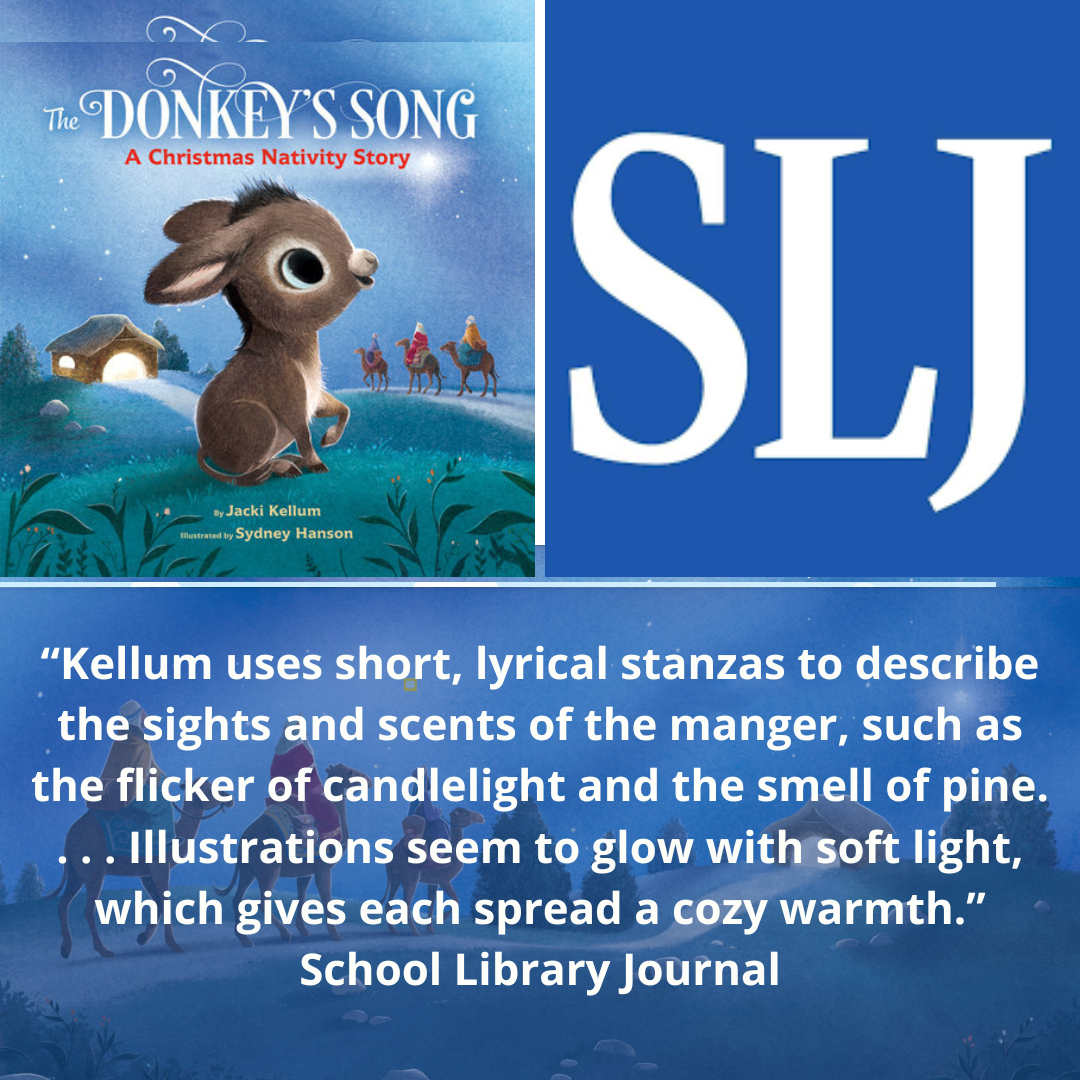
“Debut picture book author Kellum takes readers on a journey into the night of Jesus’s birth, as told by the donkey who carried Mary to the stable. Kellum uses short, lyrical stanzas to describe the sights and scents of the manger, such as the flicker of candlelight and the smell of pine. As the angels sing and the wise men arrive, the donkey brays a song to mark the wonderous occasion. Illustrations seem to glow with soft light, which gives each spread a cozy warmth. The animals all have a wide-eyed cuteness….An additional purchase for libraries where there are never enough nativity stories. –Heather Webb” – School Library Journal
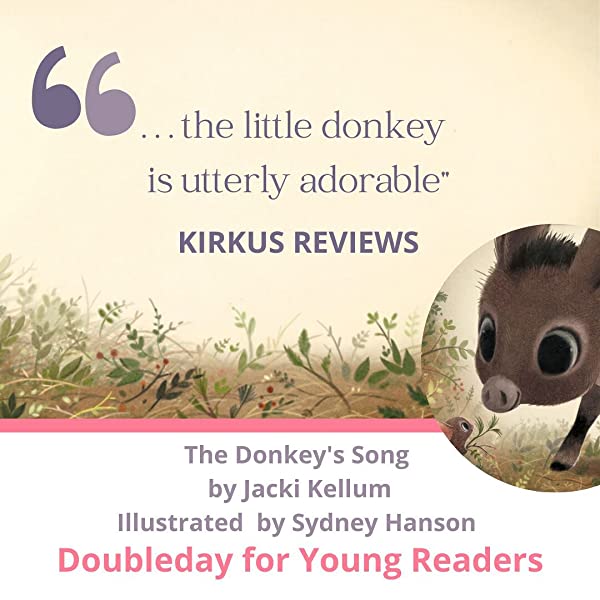
“The humble donkey that transported Mary to the Bethlehem stable describes the sights, smells, and sounds it experiences in this peaceful imagining of Jesus’s birth. Using short rhyming stanzas and reiterative phrasing (“A bit of a manger, a bit of snug hay, a bit of a soft, silent night”), debut author Kellum creates an understated tone matched by Hanson’s pastoral scenes, which are gently washed in light. Friendly-faced farm animals—including the large-headed donkey and a kind, sprightly mouse—fill most of the spreads, leading in closing pages to the donkey’s moving song: “I lifted my head/ above His hay bed…and sang of this morning of grace.” A sweet and gentle introduction to the nativity story. Ages 3–7. (Oct.)” – Kirkus Reviews

The Donkey’s Song is very, very short. Every word in that book is a piece of gold. I’ll share some tips about cutting the deadly fluff out of your writing. I’ll tell you how I mine for gold when I write. In addition, I’ll share what my editor, Frances Gilbert said about writing picture books in rhyme:
The Donkey’s Song is a Picture Book in Rhyme + Frances Gilbert’s Notes about Rhyming Picture Books
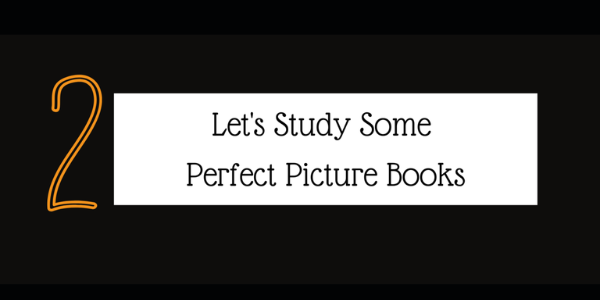
Natalie Babbitt, the author of the perfect middle-grade novel Tuck Everlasting, answered the following question:
What is your suggestion for someone who wants to start writing?
“Be a reader. It’s the only real way to learn how to tell a story.”
― Natalie Babbitt, Tuck Everlasting
I am quite sure that I win the prize for wanna-be-writer who refused to read–almost forever. Fortunately, I have had a wake-up call, and now, and since I am currently teaching Writing about Literature in college
But for many years, I have I read picture books every day. I read picture books because I love them. But like every other genre, some picture books are better than others.

During the years that I was not yet a published picture book author, I read thousands of picture books. For a while, I was a book reviewer for the New Jersey Library Association. I was also a children’s librarian, and I have learned which picture books work and which do not. There are tons of picture book classics that every picture book author needs to read. For instance, The Relatives Came is a perfect mix of illustration and text. Every author and illustrator should study it.
I will share several other picture books that are great, and I’ll tell you why I think that they are exceptional.
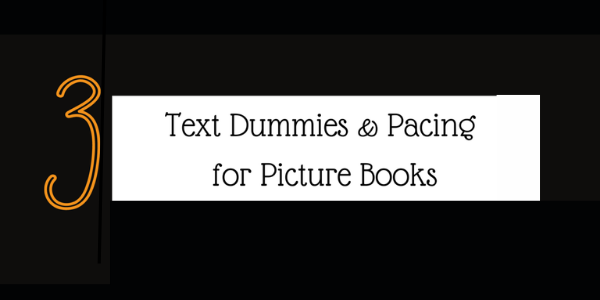
How to Create a Text Dummy for a Picture Book in Microsoft Word
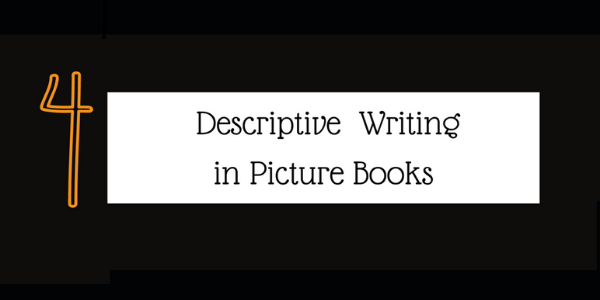
14-Day Picture Book Challenge Day 3 – Picture Writing and Word Painting – How to Write Descriptively
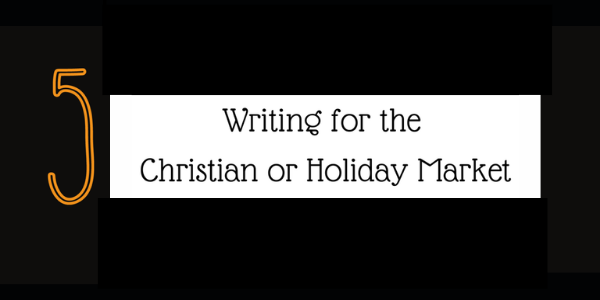
I have posted several times that because it was of a religious nature, I feared that The Donkey’s Song would never be published by a mainstream publisher. I underestimated the genre of Christian publishing–especially that in children’s Christian books. My book isn’t even out yet, but my pre-order sales have already pushed me into some nice ranking spots on Amazon. That has been an off-and-on thing. Following stats on Amazon is like chasing a firefly, but for a few seconds at a time, my pre-order sales have been sweet. Thank you, friends. But allow me to add that no one should underestimate the genre of Christian books.
Tips for Dealing with the Business Side of Creating a Picture Book

After I spend some time talking about HOW to Write A PICTURE BOOK, I’ll spend at least as much time telling you what to do next. If you never get your picture books in front of the right people, you haven’t finished creating a picture book. I know that some will debate that fact, but in my opinion, NOT getting published and then, sold, is a Buz Kill.
First of All, Get Organized:
How to Create A Journal and Goal-Setting Book for Students & Writers
What Is An Author’s Platform – How to Build An Author’s Platform
What Do Amazon Best Seller Ratings Mean? – Understanding the Business Side of Making a Picture Book
Writers Must Learn to Promote Themselves – The Importance of SEO or Search Engine Optimization
Discover more from Jacki Kellum
Subscribe to get the latest posts sent to your email.